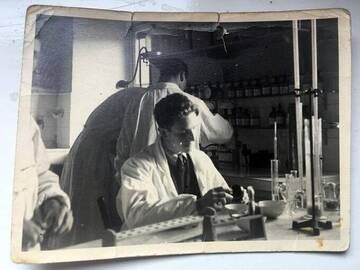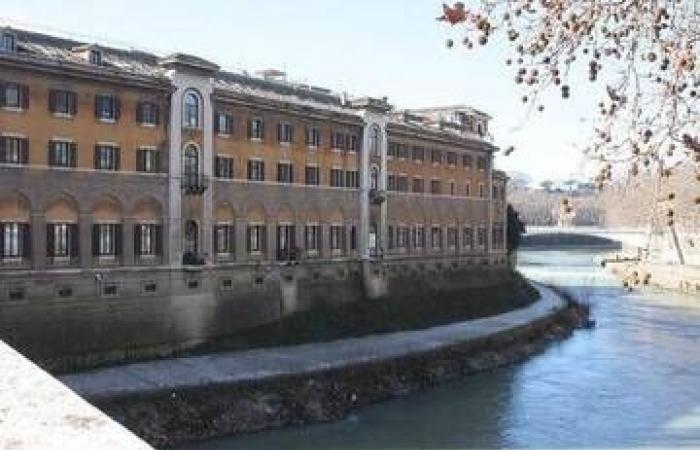Correspondence, Gautier DEMOUVEAUX.
In 1943, as the German army invaded northern Italy, a hospital in Rome was affected by a mysterious illness described as highly contagious. To the point that the soldiers will never dare to search the premises. It was actually just a ruse, and it worked perfectly.
The story takes place during World War II in Italy. In a hospital in Rome, to save the Jewish population of the Italian capital, a doctor has the brilliant idea of inventing a fanciful disease, which he describes as deadly and highly contagious. Enough to scare the Nazis, who will avoid searching the hospital!
It is true that, throughout time, the fear of epidemics and deadly viruses has terrorized populations, from the plague of the Middle Ages to the Spanish flu at the end of the First World War… In 1943, we learned that a strange epidemic would wreak havoc in Italy. Discovered by Professor Giovanni Borromeo, chief physician at the Fatebenefratelli hospital, a Catholic medical institution located on Tiberina Island, in the heart of Rome, the disease is believed to be concentrated in a district of the Italian capital.
Described by Professor Borromeo as being very contagious, it is characterized by neurological degeneration causing convulsions, dementia, then progressive paralysis, leading to death by asphyxiation. The chief doctor calls this terrible virus the name “K syndrome”, which is reminiscent of Koch’s bacillus, the bacteria causing tuberculosis.
An imaginary illness
The first cases appeared at the end of the summer of 1943, when the German army invaded the north of the country to restore power to its ally Benito Mussolini, overthrown a few weeks earlier. Rome is declared an open city, and is placed under the authority of General Kesselring.
On October 16, 1943, Gestapo and SS troops, led by Commander Kappler, raided the Rome ghetto, arresting more than 1,200 Roman Jews, men, women and children, who were deported to the Rome camp. extermination of Auschwitz, Poland.
Continuing their searches in the surrounding neighborhoods in search of fugitives, the German army gave up searching the Fatebenefratelli hospital, on the advice of Professor Giovanni Borromeo. The latter explains that the many patients suffering from K syndrome are placed in isolation, in quarantine, in order to stem the epidemic. So, without asking for their rest, the Nazi soldiers turned back, for fear of contracting this atrocious disease, and would never set foot again on the island bordered by the Tiber River.
The Roman doctor’s subterfuge worked! Because the K syndrome is a pure invention, in order to protect the Roman Jewish population from German roundups. And if Borromeo chose the letter K, it is in reference to the German leaders who laid down the law in Rome during this period!
His snub and his audacity saved nearly a hundred lives between October 1943 and June 1944, the date of the city’s liberation by the Allies.
Team work
Long before the arrival of the Nazis, the hospital had served as a refuge for the Jewish population since 1938 and the adoption of anti-Semitic laws by Fascist Italy. At that time, Professor Giovanni Borromeo – with the agreement of Brother Maurizio Bialek, who directs the Fatebenefratelli Hospital on behalf of the Hospital Order of Saint John of God, owner of the establishment – authorized his colleague Vittorio Emanuele Sacerdoti to continue working with false papers.
From that moment on, the establishment regularly received patients sent from the Jewish hospital for treatment. As living conditions become more and more complicated for the Roman Israelite population, Borromeo, Sacerdoti and another doctor, Doctor Adriano Ossicini, think about their stratagem, which they hone over time.
Dr. Ossicini recounted this stratagem in the Italian newspaper La Stampa a few years ago: “K syndrome was mentioned on the patient’s file to indicate that the sick person was not sick at all, but Jewish,” he explained. We created these documents for the Jews as if they were ordinary patients, and when we had to diagnose the disease in the files, we indicated that it was syndrome K. They were all healthy, it was just a code that secretly meant these people were hidden in the hospital! »

A mecca of Italian resistance
These mysterious patients, Jews but also political opponents, are confined in a dedicated department, located in a wing of the hospital. In connection with the Italian resistance and with the help of the Catholic monks who owned the hospital, entire families received false documents in order to clandestinely leave the institution in the heart of Rome, to go and hide in different monasteries in the countryside. surrounding areas.
In the basement of the building, a clandestine radio transmitter linked the place with the Partisans of Rome and the region. Recognized for their fight against fascism at the Liberation, Giovanni Borromeo and his acolytes were saluted for their bravery in Italy.
In 2004, the Israeli Yad Vashem memorial in Jerusalem, dedicated to the victims of the Shoah, recognized Borromeo (43 years after the death of the Italian doctor) as one of the “righteous among the Nations”, a title which salutes the memory of the men and women who risked their lives to save Jews during World War II.
In 2016, it was the turn of the Fatebenefratelli hospital, which is still in operation, to obtain the title of “House of Life”, awarded by the Raoul Wallenberg International Foundation. At the entrance to the institution, a plaque reminds passers-by of this incredible story, and concludes: “This place was a beacon in the darkness of the Holocaust, and our moral duty is to remember these great heroes so that new generations can know and appreciate them. »








